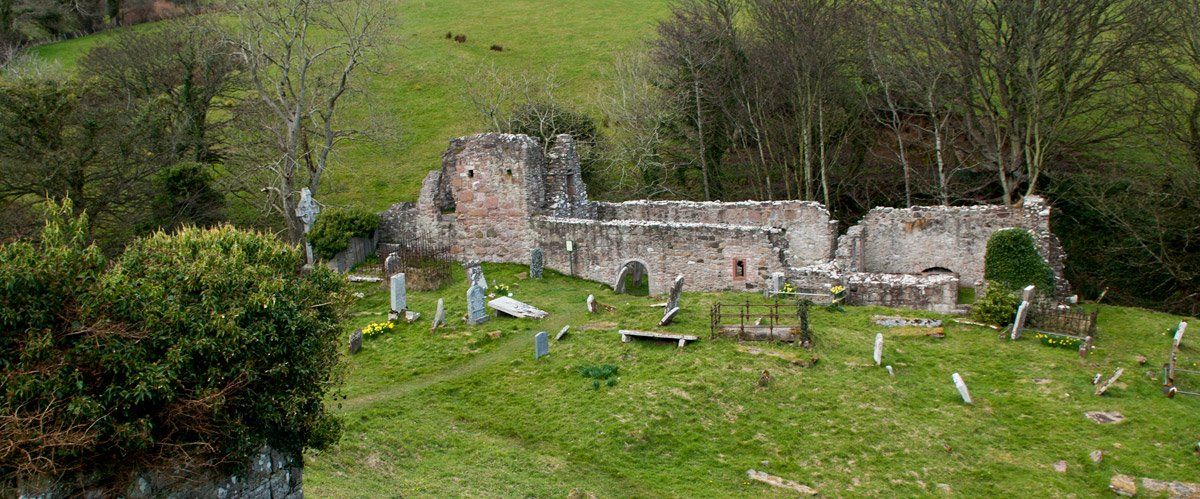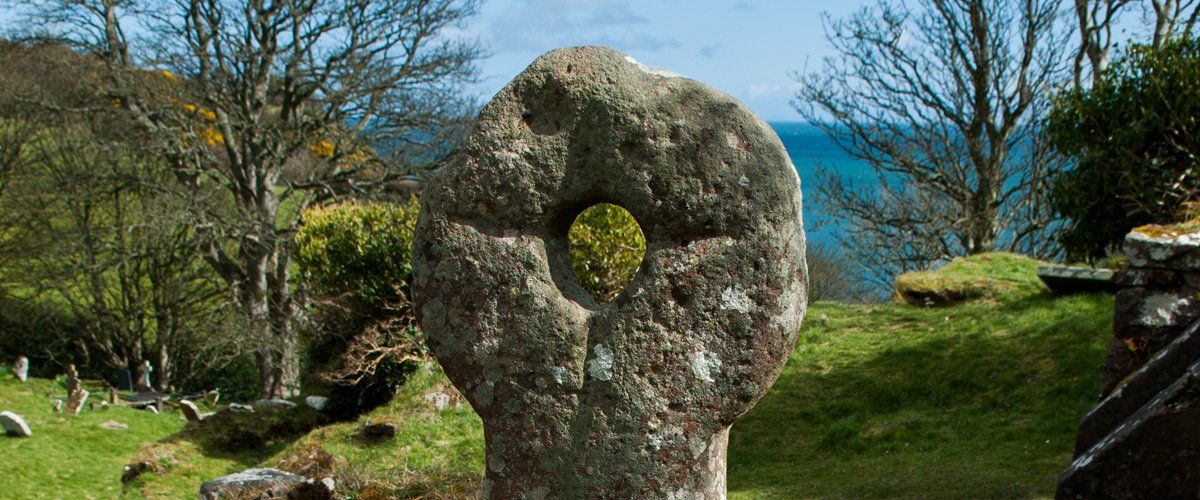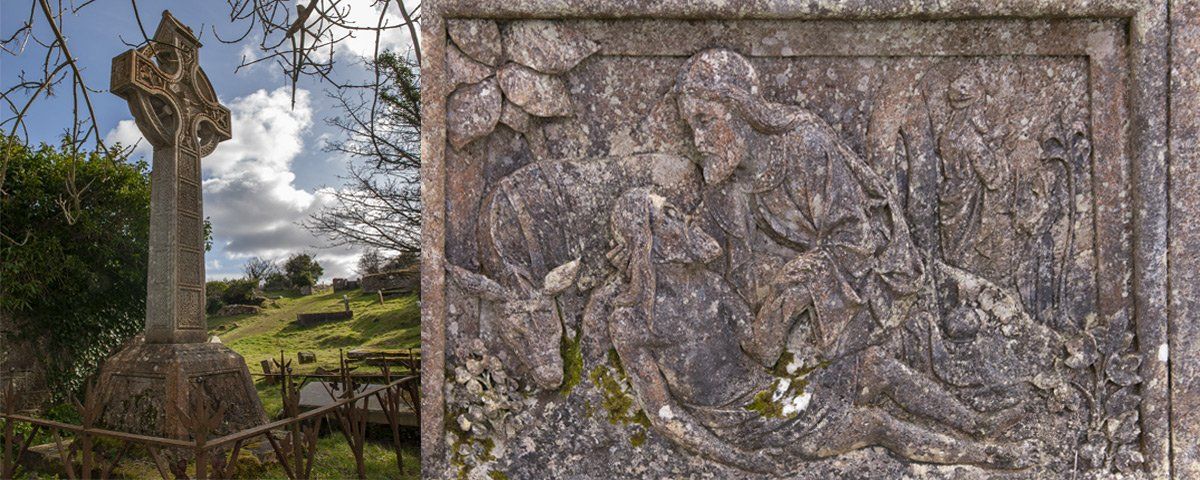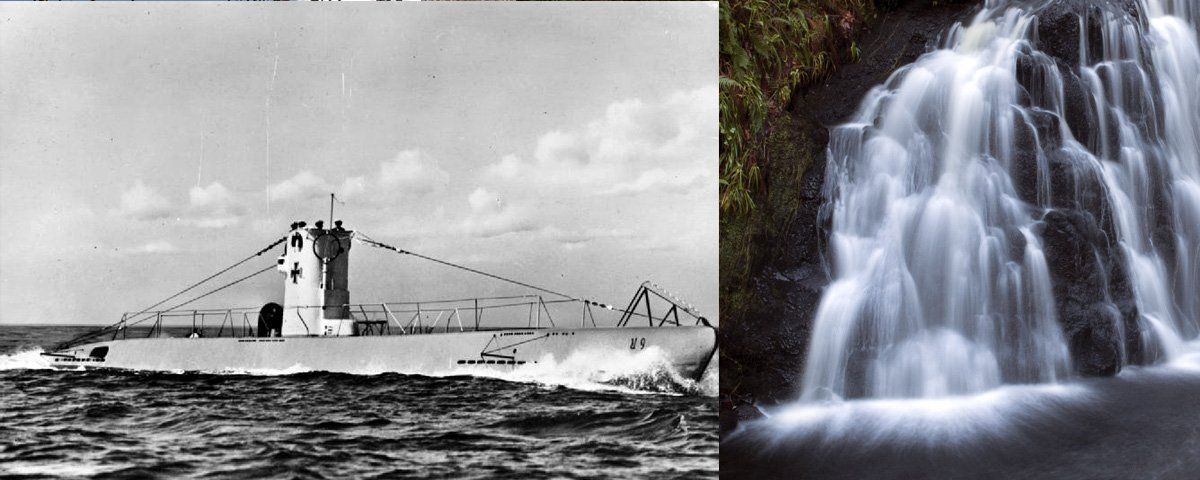The Layd Church
Layd Church
The Layde Church is situated a short distance out of the village - if you are walking, follow the Shore Road to the beach, where a cliff path leads to the ruin and graveyard set in a steep-sided valley beside a stream, the site dates back to early Christianity. The church, whose patron saint was Kieran, is recorded as being in use from 1288 until 1790, when the last services were held. During these times, churches were not spared by ongoing conflict and many would be attacked or destroyed. The local red sandstone ruin we see today dates to around 1638 when the church was rebuilt, complete with thatched roof, another major renovation occurred in 1696. The Layd is one of the burial sites for the MacDonnells and you will find several of the families graves here.
The intricately carved Celtic cross at the end of the church is dedicated to Dr James MacDonnell, co-founder of the Belfast Dispensary and Fever Hospital, a free hospital for the poor. The Belfast Dispensary and Fever Hospital later became the Royal Hospital in 1875, and finally the Royal Victoria Hospital. Inside the gateway to Layd Church there is a standing stone with a hole through a circular top. These stones, though not common, can be found throughout Ireland. Many believe they were pagan artefacts, pre-Christian in origin, and were absorbed by Christianity as it spread throughout Ireland, many were regarded as having mystical powers of healing.
It is known that many rituals and beliefs evolved around holed stones throughout the world. One custom was to make a solemn oath, this was done by two people joining hands through the stone. Common law marriages are known to be performed through hole stones right up to the present day. Some suggest the introduction of the wedding ring replaced this custom in the Christian faith, pregnant women would pass clothes through the hole to bring an easy childbirth. Evidence suggests that they were placed at the entrances to chambered graves as portals to another world, the bones of their dead being passed through them.
During the First and Second World Wars, the North Channel was active with German U-Boats and dozens of ships were sunk in the area, this was the dispersal area and final leg for convoy ships crossing the Atlantic. German submariners had good information about the coast and knew where sources of freshwater could be acquired. One submariner who had come ashore to get fresh water from Port Ob near the Layd Church told his son that they had surfaced off Vinegar Point, close to Port Ob, and if he was ever in Ireland to visit the spot. The son did so a few years after his father pass away and relayed the story to a local shop keeper.
All Rights Reserved | Art Ward
© 2024




